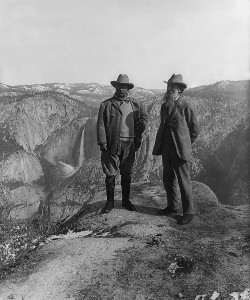
Theodore Roosevelt is appropriately credited as being the driving force at the start of the American conservation movement. Both his conservation philosophy and his bias for vigorous action are reflected in the success story of Wildlife Alliance, a non-profit organization headquartered in the U.S. that is heavily and successfully engaged in conservation on the ground in Cambodia.
Cambodia is blessed with highly diverse tropical ecosystems, which are home for many threatened and endangered species. It is also a developing economy, without the strong institutional and legal infrastructure to support conservation that we take for granted in the US. As a result, Cambodia’s fauna and flora are seriously threatened by poachers. They kill animals for meat, sell them to restaurants in urban areas, and export them dead or alive, whole or in parts, to buyers in other countries in Asia or elsewhere. Cambodia’s forests are also under pressure, with valuable trees being illegally logged and exported to wealthy countries where consumers, unaware of the dubious pedigree of these wood products, admire them in their homes, as the rainforest is threatened.
However, there is reason to be optimistic for the future. The non-profit Wildlife Alliance, founded by American Suwanna Gauntlett in 2001, has produced impressive results: over 56,000 live animals rescued from the illegal wildlife trade; 3,190 wildlife traders apprehended; nearly 2 million acres of rainforest protected; alternative wildlife-friendly livelihoods provided for 5,000 people whose incomes have increased by 300 percent over 10 years; a 75% reduction in wildlife trafficking nationwide; a 90% decrease in wildlife consumption at Phnom Penh’s restaurants; and more than a 300,000 people educated in wildlife conservation.
This success stems from taking an integrated, multi-prong approach. The first prong, reminiscent of Teddy’s “big stick”, is to work closely with Cambodian forest and wildlife law enforcement to more effectively implement wildlife laws against poaching, and to close loopholes in the laws. Wildlife Alliance also works hard to build consensus among local communities, provincial and national government officials, and other non-governmental organizations as to what rainforest areas need to be protected by the government. Wildlife Alliance then administers these areas to ensure government regulations are enforced.
But it does more than help catch the bad guys, it rescues and rehabilitates endangered, heavily traded, and poaching-vulnerable wildlife. Using a law enforcement team to investigate violations and rescue animals, and animal husbandry experts to care for and rehabilitate them, Wildlife Alliance regularly releases rescued animals back into protected forests where they can stay safe.
Wildlife Alliance shares Roosevelt’s insight that conservation efforts will ultimately fail unless supported by the local community. As a result, it empowers local communities to preserve the environment through community organizations, access to micro-funding for small businesses, and training local people in sustainable livelihoods such as community agriculture and ecotourism. Without such sustainable development efforts, many among the rural poor would otherwise engage in slash-and-burn cultivation or wildlife poaching. By implementing alternative livelihood programs, Wildlife Alliance helps rural communities increase their income and encourage sustainable – rather than destructive – practices.
Within already protected forests, Wildlife Alliance plants indigenous trees to restore the rainforest cover, since the key to preserving rainforests is to regrow and reconnect fragmented forests. Creating its own “bully pulpit”, Wildlife Alliance builds coalitions across government departments to bolster the personal investment in conservation by government executives and politicians to create a strong fabric of institutional support that sustains the work on the ground.
Finally, recognizing that creating a conservation-minded culture requires public education, Wildlife Alliance designs and implements a multi-generational educational program to make conservation accessible and exciting for communities within and around the forests. With continued education for adults and experiential learning for children, expectations of strong law enforcement, preservation, and conservation are perpetuated across generations. President Roosevelt spoke of how important it is for us to be willing to enter the “arena” in a great cause. Wildlife Alliance is definitely in the arena, and through a combination of hard work and a comprehensive approach compatible with the local culture, is regularly winning victories for conservation. This is a model to be replicated, at home and abroad.

